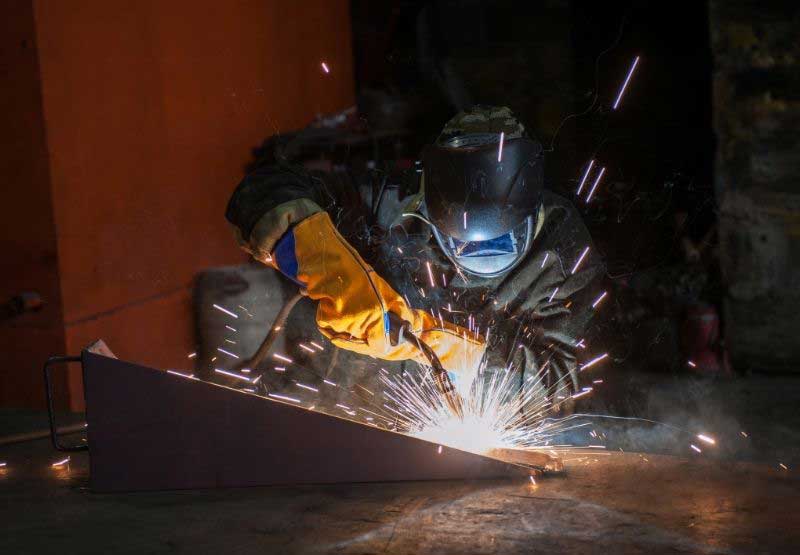To become a welder, the length of time it takes depends on the educational path you choose. The time it takes to complete an apprenticeship varies significantly from the time it takes to complete a trade school program.
If a vocational program is available at their high school, some people begin welding instruction as soon as they start high school. Others may begin their education in a technical school without previous hands-on experience.
Here are some things to remember as you work toward becoming a welder.
How long does it take to become a certified welder?
A new career can entice you to dive straight in and get started, especially if you are excited about it. To be a certified welder, on the other hand, takes time. However, there are a few variables that determine how long it will take.
Practical schools offer welding training programs that can last up to two years, depending on the school’s curriculum. Many educational institutions provide accelerated courses that go along at a quicker pace. Depending on the program, a welder’s education might take anywhere from seven months to two years.
Postsecondary institutions offer programs for aspiring welders right after high school. They can enroll in a local community college or professional school program or gain experience through on-the-job training.
When you first begin your professional career, there is usually a predetermined path you must take, and this path might be pretty lengthy. To become certified, you will need to spend an additional year or two of study time.
One of the unique aspects of pursuing a job in welding is the variety of paths you can take to get there. In as little as a year, you can earn your AWS certification and land a career as an AWS Certified Welder. Another option is to specialize in broadening your skillset and increasing the number of possible job options.
Welding certificates and certifications can be earned in as little as three weeks or as long as 18 months. However, the average time to earn an associate’s degree in welding as previously stated is two years. All welders seeking certification must take an exam, albeit the time it takes to pass varies by professional organization.
To get certified, you will need to prepare for, schedule, and pay for your exam when ready. It can take up to four weeks to acquire your credentials after passing your certification test.
Maintenance – you cannot just sit back and enjoy the fruits of your labor once you have achieved certification. You will require assessment or code-quality welding tasks to keep your credentials up to date.
Getting a job as a certified welder will be easier if you clear your certification test as quickly as possible. Your possibilities of completing the exam on your first attempt increase if you prepare adequately.
AWS recommends that you familiarize yourself with the QC7 Standard and all its supplements before your test. Get registered at an approved testing facility when ready to sit for the exam. Make sure you bring your QC7 Standard along on the day of the test.
Welder Training
On-the-job training, welders training programs, vocational schools, apprenticeships, and community colleges are all viable choices for aspiring welders to explore.
After completing their welder training, students might earn a certificate, diploma, or an associate’s degree. Students aspiring to be welders receive training in welding parameters, metallurgy, interpreting blueprints, and safety protocols, among other things.
Welding training can take a few months to a few years, depending on the type of training a welder chooses. In some cases, welders can advance in their careers without completing a formal vocational training school because of their on-the-job training. However, the process of becoming a welder from a laborer can take a long time.
Many firms prefer to hire individuals who have already received training, credentials, and certifications, even if they are inexperienced entry-level employees. In part, it is because even those with formal professional training still need many weeks of training and, in certain circumstances, certificates from their employers.
High School/GED
A high school diploma or equivalent, such as a GED certificate, is typically the minimum educational need for aspiring welders. Students who want to pursue a profession in welding should take math, science, and shop courses in high school.
High school graduation takes roughly four years to earn, but a GED certificate can be obtained in as short as three months.
Welding skills are emphasized in a vocational school’s skilled trades training curriculum. During the hands-on welding curriculum, students learn how to weld, shop safety, pipefitting, and read blueprints.
Community College
Students can earn an associate degree in welding after completing a two-year course at a community college. Because of the various schedules, some students may require more time to complete their degree.
Students in welding programs at community colleges must take general education courses like English in addition to their welding courses.
Welder Certifications
Students often receive certification in certain welding technologies as part of their education. Some technical College offers certificates in SMAW, GTAW, and FCAW. A company may also have its internal certification program if it uses specialized equipment.
An increasing number of industrial organizations, including the American Welding Society (AWS), API, and ASME, also offer welding certifications. Some certificates can be obtained during or soon after welding school, while the others require a certain amount of experience.
Why Should You Opt for Welding Tech Schools?
Math and science skills are honed in welding tech programs. Schooling is not the only route to becoming a welder. Another option is to attend a vocational school or a community college.
In addition, the certificate program can take anywhere from 8 to 18 months to finish. Another month is needed for certification. After completing a short-term course, you can get a certificate from a vocational trade school.
In the meantime, it requires two years to earn an associate’s degree in industrial applications and one month to become certified in the field. Welding engineering requires a bachelor degree and a certificate in four years.
The vocational schools focus on these areas:
- Techniques for welding
- Safety in the workplace
- Blueprint
- Lifting of pipe
- Shop security
- A variety of methods for slicing
- Health and safety instruction
- Metallurgy
- Rigging
Related article: How Much Do Welders Make?
What is right for you?
Deciding which way to begin a career in welding depends on how quickly you want to start working and earning money, and achieving your long-term goals.
Remember that you can always add specialized welding certifications or pursue a graduate degree later if you want to advance your career.
Common Certifications for a Welder
Welders are more likely to hold the Certified Welder credential. Certification from the American Welding Society is required to obtain this certification. This certification proves that you have made progress in your ability to carry out your job responsibilities.
If you are starting in the field, you do not need a lot of education or experience to get this certification. To become a Skilled Welder, you must pass the certification exam. Only two years of job experience are required for certification. Every five years, you must re-certify.
Conclusion
Access to cutting-edge welding gear and equipment is one of the main benefits of joining an academic program. Additionally, you would acquire hands-on experience in a business where you could watch knowledgeable teachers practice various skills. You would learn the best safety practices to adhere to in your welding firm or any industrial facility.
You can enroll in a typical welding course, which could last up to two years. Alternately, you could enroll in an advanced course, which might mean spending less time in class and more time finding jobs in your industry.
You must determine the pace and style that work best for you. In addition to providing you with the knowledge and abilities required to land an entry-level welding position, a degree in the manner indicated above will also help you gain a more comprehensive understanding of the range of welding-related occupations that may be open to you.
You will get to know knowledgeable people who can serve as mentors and provide sound advice on finding the finest jobs and what it could be like to operate in other industries.
Reference:






